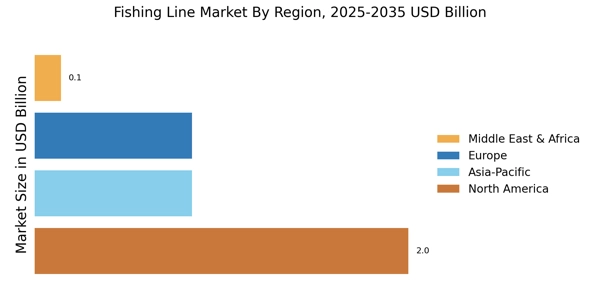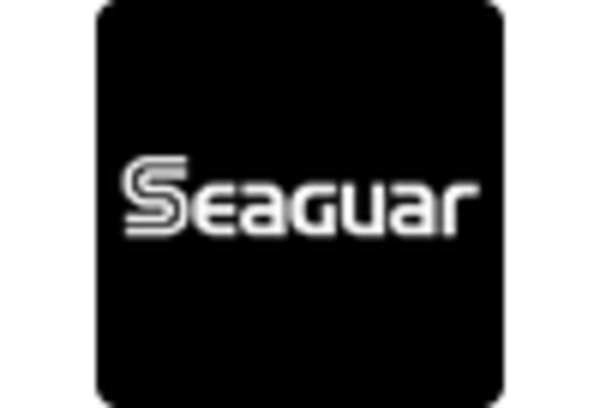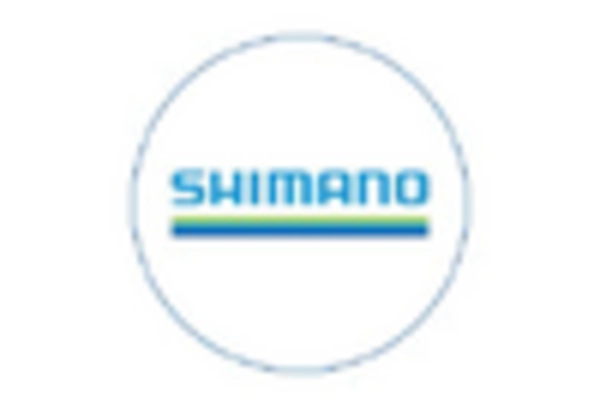The Fishing Line Market is currently characterized by a dynamic competitive landscape, driven by innovation, sustainability, and regional expansion. Key players such as Berkley (US), Shimano (JP), and Daiwa (JP) are at the forefront, each adopting distinct strategies to enhance their market positioning. Berkley (US) focuses on product innovation, particularly in developing eco-friendly fishing lines, which aligns with the growing consumer demand for sustainable products. Shimano (JP), on the other hand, emphasizes technological advancements in its fishing gear, integrating smart technology to improve user experience. Daiwa (JP) is actively pursuing global expansion, particularly in emerging markets, thereby diversifying its customer base and enhancing its competitive edge. Collectively, these strategies contribute to a competitive environment that is increasingly shaped by consumer preferences for sustainability and technological integration.
In terms of business tactics, companies are localizing manufacturing to reduce costs and improve supply chain efficiency. This approach is particularly evident in the Fishing Line Market, which appears moderately fragmented, with several players vying for market share. The collective influence of key players is significant, as they not only set industry standards but also drive innovation through competitive practices. The focus on optimizing supply chains and localizing production is likely to enhance responsiveness to market demands, thereby strengthening their competitive positions.
In August 2025, Berkley (US) launched a new line of biodegradable fishing lines, marking a significant step towards sustainability in the fishing industry. This initiative not only caters to environmentally conscious consumers but also positions Berkley as a leader in eco-friendly fishing solutions. The strategic importance of this move lies in its potential to attract a growing segment of the market that prioritizes sustainability, thereby enhancing brand loyalty and market share.
In September 2025, Shimano (JP) announced a partnership with a tech startup to develop smart fishing gear that integrates AI for real-time fishing analytics. This collaboration is indicative of Shimano's commitment to innovation and its understanding of the evolving needs of modern anglers. By leveraging technology, Shimano aims to enhance user engagement and provide a competitive advantage in a market that increasingly values high-tech solutions.
In July 2025, Daiwa (JP) expanded its operations into Southeast Asia, establishing a new manufacturing facility in Vietnam. This strategic move is likely to reduce production costs and improve supply chain logistics, allowing Daiwa to respond more effectively to regional market demands. The establishment of this facility not only signifies Daiwa's commitment to growth in emerging markets but also reflects a broader trend of companies seeking to optimize their operational footprints in response to global market dynamics.
As of October 2025, the Fishing Line Market is witnessing trends that emphasize digitalization, sustainability, and technological integration. The rise of strategic alliances among key players is shaping the competitive landscape, fostering innovation and enhancing product offerings. Moving forward, competitive differentiation is expected to evolve, with a pronounced shift from price-based competition to a focus on innovation, technology, and supply chain reliability. Companies that can effectively leverage these trends are likely to secure a more robust position in the market.


















Leave a Comment